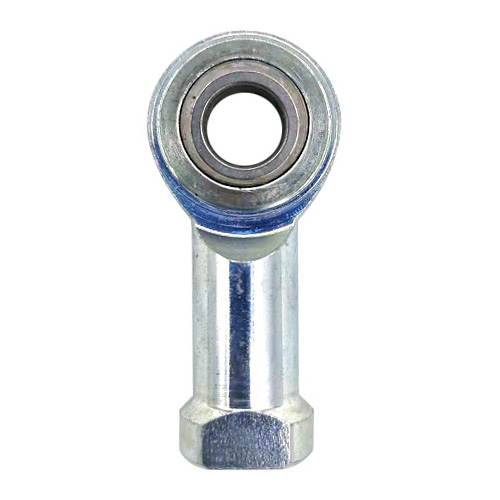Key points about rod end bearings
2023-10-18
A rod end bearing, also known as a spherical plain bearing or heim joint, is a type of mechanical joint that connects a rod or shaft to a housing or structure. It is designed to allow angular misalignment and accommodate axial and radial loads. Rod end bearings consist of a spherical bearing (inner ring) and a housing or body (outer ring), with a threaded or plain bore for attachment.
Here are some key points about rod end bearings:
1. Construction: Rod end bearings typically consist of an inner spherical bearing, an outer housing or body, and a connecting rod or shaft. The inner bearing is a spherical or ball-shaped bearing that allows for rotational movement and misalignment. The outer housing provides a mounting point and may have a threaded bore for connection to other components.
2. Movement and Load Capacity: Rod end bearings allow for angular misalignment, which means they can accommodate tilting or rotation between the connected components. This flexibility allows for smooth movement and reduces stress on the joint. Rod end bearings can handle both axial loads (along the axis of the shaft) and radial loads (perpendicular to the axis of the shaft), depending on the design and specifications.
3. Types of Rod End Bearings: There are various types of rod end bearings available, including:
- Male Rod End: These have external threads on the housing and are designed to be connected to a female-threaded component.
- Female Rod End: These have internal threads on the housing and are designed to receive a male-threaded component.
- Plain Bore Rod End: These have a plain bore instead of threads and are typically used in applications where a non-threaded connection is required.
4. Applications: Rod end bearings are used in a wide range of applications, including mechanical linkages, steering systems, suspension systems, robotics, industrial machinery, and aircraft control surfaces. They are especially useful in applications that require articulation, angular movement, or load transmission while allowing for misalignment.
5. Lubrication and Maintenance: Proper lubrication is essential for the smooth operation and longevity of rod end bearings. Depending on the application, they may require periodic lubrication with grease or oil. Regular inspection and maintenance are necessary to detect wear, corrosion, or damage to the bearing and ensure optimal performance.
It's important to consider factors such as load capacity, angular misalignment requirements, environmental conditions, and the specific needs of the application when selecting a rod end bearing. Manufacturers provide specifications and guidelines to help choose the appropriate bearing for a given application, and professional advice may be necessary for critical or high-performance applications.



